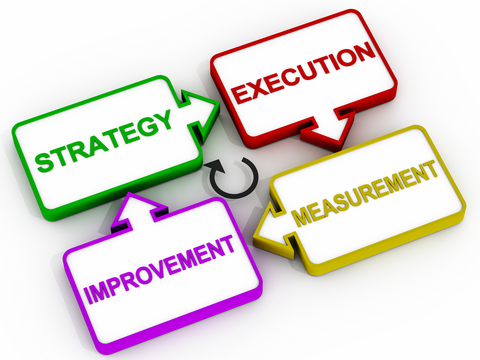Are you measuring performance of your IT strategy?
 Strategic formation and strategic thinking are household expressions and are applied to every possible scenario to underline the importance of an initiative. Workshops are conducted and consultants engaged to figure out which strategic direction is the right one and should be pursued. This is followed by compiling a strategic plan document. Once this document is compiled, day-to-day activities take over again and nobody really follows through on implementation. Most strategic plans, never having made it to the implementation stage, begin to collect dust.
Strategic formation and strategic thinking are household expressions and are applied to every possible scenario to underline the importance of an initiative. Workshops are conducted and consultants engaged to figure out which strategic direction is the right one and should be pursued. This is followed by compiling a strategic plan document. Once this document is compiled, day-to-day activities take over again and nobody really follows through on implementation. Most strategic plans, never having made it to the implementation stage, begin to collect dust.
The reason is twofold. First, it is challenging to break down the strategy into activities such that they will be performed with discipline over a length of time. Too often these activities require some form of change management and process transformation which always takes significant effort to implement.
A second reason is that when a strategic plan is developed, the monitoring processes for implementation are either forgotten or neglected. The plan starts off strong, but the enthusiasm quickly diminishes because nobody really knows what progress is being made; and without progress monitoring, deviations from the plan are not even being recognized. Therefore, a well-defined monitoring process should be a mandatory part of every strategic planning discussion.
The question is, what characteristics should such a process have? For one, it should be multi-dimensional, meaning that it should not only measure financial information but also consider other aspects. It should also be easy to communicate within the organization, and obviously, it should link to the strategic plan that was created.
The balanced scorecard provides such a multi-dimensional performance measurement tool. It was developed by Robert S. Kaplan and David P. Norton (Kaplan & Norton, 1996) and introduced through their Harvard Business Review paper in 1992. Since then, the balanced scorecard has enjoyed widespread acceptance by corporations in measuring overall value creation and performance. The fundamental principle of the balanced scorecard is to measure performance on four distinct criteria. To relate this specifically to IT strategy, these criteria would be:
- Business value perspective
This perspective measures the business value that is being generated by IT. Measurements can be reflected in functionality or projects delivered on time and within budget. Value is also measured through productivity improvements, efficiency contributions for processes, and general service level achievements. - Financial perspective
The financial perspective measures the budget performance as well as the performance of all projects within a program. The financial perspective should have a strong primary focus on business value generation and should not focus solely on cost savings. - Internal process perspective
This perspective examines the core processes that contribute to achieving the objectives related to generating business value. It not only analyzes existing processes but often introduces new processes to better serve the business and identifies processes that should be eliminated. It considers innovations and improvements that could be applied to improve general IT effectiveness. Such processes could include the implementation of agile methods, the introduction of DevOps, and streamlining service desk activities. - Learning and growth perspective
The learning and growth perspective addresses three areas. The first is IT staff development and growth. The second focuses on IT infrastructure and effectiveness of the use of technologies. This should include an assessment of the effectiveness of the enterprise architecture, which is an integrated part of an IT strategic plan. The third focuses on organizational capital readiness, which includes organizational capabilities and the readiness to undertake transformations required to achieve strategic objectives.
